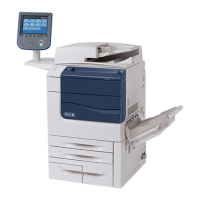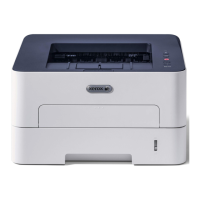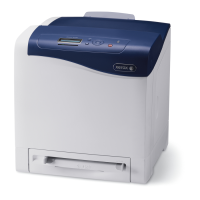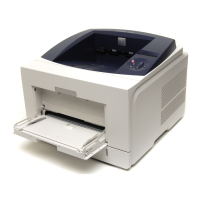8.
Real addressing
is
allowed
in master mode
and
in
slave
mode,
and
is
specified
when
bit
positions 9
and
61
of
the
PSWs
both
contain
zero.
VIRTUAL
ADDRESSING
Virtual addressing uses the memory map to
determine
the
actual
address
to
be
associated
with a
particular
reference
address
of
each
instruction.
Virtual addressing differs
from
real addressing in
that
there
is
normally no
exact
relation-
ship
between
the
effective
virtual
address
and
the
actual
address.
These
are
the
characteristics
of virtual addressing:
1.
Each
reference
address
is
a
17-bit
address.
2.
The
reference
address may be
direct
or
indirect,
with
or
without
postindexing.
3.
Displacements
associated
with
indexing
are
automati-
cally
aligned,
as
required,
using
the
full
32-bit
contents
of
the
index
register.
The final result
is
truncated
to
the
left
of
the
high-order
bit
of
the
original
17-bit
reference
address,
and
the
effective
virtual address
is
a
16-bit
doubleword address,
17-bit
word address,
18-bit
halfword address, or a
19-bit
byte
address.
4.
Virtua I memory
access
protection
is
always
invoked.
If
the
access
protection
code
is
invalid,
the instruction
aborts
and
traps to
location
X'40'.
(See "Trap System",
later
in this
chapter.)
5.
Memory mapping translates the 8 most
significant
bits
of
the
effective
virtual
address (the
page
portion) into
an
l1-bit
page
address. This
page
address
is
concate-
nated
with
the 9 least
significant
bits
of
the
reference
address.
The
resultant
20-bit
word address
is
the
actual
address used to
access
memory. This
feature
permits
anyone
user
at
any
given
time to
have
a
virtual
mem-
ory
of
as
many as 128K words (256 pages)
located
throughout real
(actual)
memory comprising
as
many
as 256K words (512
pages).
Although virtual memory
may
be
physically
fragmented,
it
is
logically
contiguous.
Note
that
Sigma
6/7
programs may run on this computer
system
without
requiring
change
to
the
mapping
struc-
ture.
The memory map
is
loaded with
8-bit
page
ad-
dresses (the 3
high-order
bits of the
ll-bit
real
page
address
are
reset to
zeros).
The most
significant
8 bits
of
the
effective
virtual add.-ess
are
then
translated
into
the
designated
8-bit
page
address.
6.
The memory
writp.-protedion
fp.otlJre
is
invokp.rl
for
thE?
actual
address in real memory.
7.
Virtual addressing may be used in
all
modes (master,
master-protected,
and slave)
and
is
specified
when
bit
9
of
the
PSWs
contains a
one.
20 Main Memory
ADDRESS
MODIFICA
nON
EXAMPLE:
INDEXING
(REAL
AND
VIRTUAL
ADDRESSING)
Figure 6 shows how
the
indexing
operation
takes
place
dur-
ing real
and
virtual addressing
operations.
The instruction
is
brought
from
memory
and
loaded
into
a
34-bit
instruction
register
that
initially
contains zeros in the two low-order
bit
positions (32
and
33).
The
displacement
value
from
the
index register
is
then
aligned
with
the
instruction register
(as
an
integer)
according
to the address type
of
the
instruc-
tion;
that
is, if
it
is
a
byte
operation,
the low-order
bit
of
the
displacement
is
aligned
with
the
least
significant
bit
of
the
34-bit
instruction register (bit position
34).
The
dis-
placement
is
then shifted
one
bit
to
the
left
of this position
for a halfword
operation,
two bits to
the
left
for a word
operation,
and
three
bits to
the
left for a doubleword
oper-
ation.
An
addition
process then takes
place
to
develop
a
19-bit
address, referred to as the
effective
address of
the
instruction.
High-order
bits of
the
32-bit
displacement
are
ignored in
the
development
of
this
effective
address
(i
.e.,
the
15
high-order
bits
are
ignored for word operations,
the
25
high-order
bits
are
ignored for shift operations,
and
the
16
high-order
bits
are
ignored for doubleword
operations).
The
displacement
value,
however,
can
cause
the
effective
address to be less than
the
initial
reference
address (within
the
instruction) if the displacement
value
contains a
suffi-
cient
number of
high-order
12's
(i
.e.,
if
the displacement
value
is
a
negative
integer
in two's complement form).
The
effective
virtual address of
an
instruction
is
always a
19-bit
byte
address
value.
This
value,
however,
is
auto-
matically
adjusted
to
the
information boundary
conventions.
Thus, for halfword operations the
low-order
bit
of
the
effec-
tive
halfword address
is
zero;
for word
operations
the two
low-order
bits of the
effective
word address
are
zeros;
and
for doubleword operations
the
three
low-order
bits of
the
effective
doubleword address
are
zeros.
In
a
byte
operation
with
no
indexing,
the
effective
byte
is
the
first
byte
(byte 0 in
bit
positions
0-7)
of
a word
lo-
cation;
in
a halfword
operation
with
no
indexing,
the
ef-
fective
halfword
is
the first halfword (halfword 0
in
bit
positions
0-15)
of
a word
location.
A doubleword
opera-
tion
always
involves a word
at
an
even
numbered address
and
the
word
at
the
next
sequential
(which
is
odd numbered)
word
address.
Thus, if
an
odd numbered word
location
is
specified
for a doubleword
operation,
the
low-order
bit
of
the
effective
address field (bit position 31)
is
automatically
forced to
zero.
This means
that
in a doubleword
operation
an
odd numbered word (reference) address designates the
same doubleword as
the
next lower
even
numbered word
address.
In
the
real addressing mode, the
19-bit
effective
virtual
address
is
concatenated
with 3
leading
zeros to
form
a
22-bit
actual
address.
In
the virtual addressing mode,
the
8 most
significant
bits of
the
19-bit
virtual address
are
mapped (using the memory map)
into
the
ll-bit
actual
page
address, thus forming a
22-bit
actual
address.
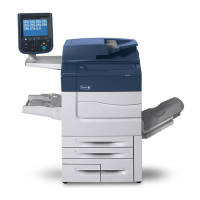
